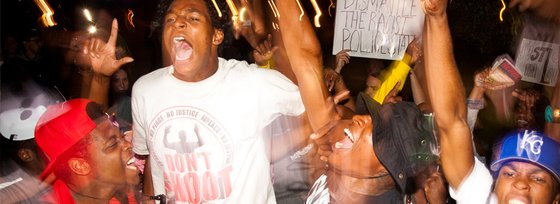MacArthur's Journalism and Media program announced $5.7 million in grants to seven outstanding organizations serving the nonfiction multimedia storytelling field. These grants support a range of programs that provide holistic resources to emerging and veteran professional documentary media makers from historically underrepresented backgrounds. Of the total amount, $2.25 million will go directly to film projects and filmmakers via re-granting.
In choosing which new institutional partnerships to establish, we deliberately selected a range of organizations that, together with our eight existing partner organizations, form a national network of 15 institutions that provide support to nonfiction multimedia makers with diverse perspectives on critical social issues. Some of these organizations have been operating for several decades, some are more recently established, and others are experiencing a rebirth as they determine how best to serve their constituencies of independent media makers in responsive and innovative ways.
MacArthur supports this work because we know the power of carefully crafted documentaries and nonfiction multimedia stories that capture how events and policies impact the lived experiences of people and communities.
In theaters now, the MacArthur-supported documentary Whose Streets? co-directed by Sabaah Folayan and Damon Davis, starts with two Ferguson, Missouri, activists driving north through St. Louis, in the rain, at night.
"Where are we right now?" Folayan asks, the familiar prompt of the verité documentary filmmaker.
"We're passing through three out of the five poorest zip codes in the state of Missouri – and they all touch each other," activist Tory Russel replies. "Two of the worst high schools, middle schools and elementary schools… We are straight up raising children who can't read."
The film then displays the text of the 1857 U.S. Supreme Court decision in Dred Scott v. Sanford, which found that black Americans were "so far inferior that they had no rights which the white man was bound to respect." The location of this landmark case: St. Louis, Missouri.
In that moment and throughout the groundbreaking film, the audience is reminded that the 2014 Ferguson uprising and land on which it took place are bound up in history and inextricable from its context.

Whose Streets? spends its time not with the official story of Ferguson in the aftermath of the killing of Michael Brown, Jr, a narrative that has been accessible via myriad sources, but with the stories of witnesses and the community most affected. Acknowledging its point of view, Whose Streets? is also grounded in something irrefutable: the full timeline of events, brilliantly juxtaposing context-rich frontline reporting of citizen activists with the shallowest and most dismissive of cable news coverage.
Creating this kind of insightful and informed documentary film is both an art and a science and requires respect, accuracy, and solidarity. Independent filmmaking – especially for makers outside major cities – can be an isolating experience. Creative support, professional development, and access to networks and resources are an imperative for this field of courageous makers.
In the case of Whose Streets?, first time filmmakers Folayan and Davis received direct funding from MacArthur, Just Films/Ford Foundation, Open Society Foundations, Threshold Foundation, Sundance Documentary Fund, the Pare Lorentz Documentary Fund/IDA, Cinereach, Bertha Britdoc Fund, Tribeca Film Institute, Chicago Media Project, and the New York State Council on the Arts, among others. They also received hands-on creative support and mentorship through the Firelight Media Documentary Lab, Sundance Institute Documentary Edit & Story Lab, and the Chicken & Egg Pictures Accelerator Lab.
When the artists and journalists assembling these narratives come from communities that are both most affected by an issue and have been historically underrepresented among professional media makers, and they have access to holistic support in the creation of their work, what emerges are documentaries with the weight and leverage to be influential. These documentaries are unapologetic about their point of view, rooted in context, and armed with evidence captured by the camera.
In today's information environment, we need these more complete, thoughtful, and contextual narratives – from storytellers whose voices and perspectives have been largely absent from the national narratives for far too long.
With these new awards, MacArthur brings the total number of institutional partners to 15. Together they form a national network that will support more than one hundred filmmakers each year in a game-changing way. This is one expression of MacArthur's enduring commitment to Journalism and Media at a time when the stories Americans record, report, and tell about ourselves and one another will help determine the course of our nation's future.



